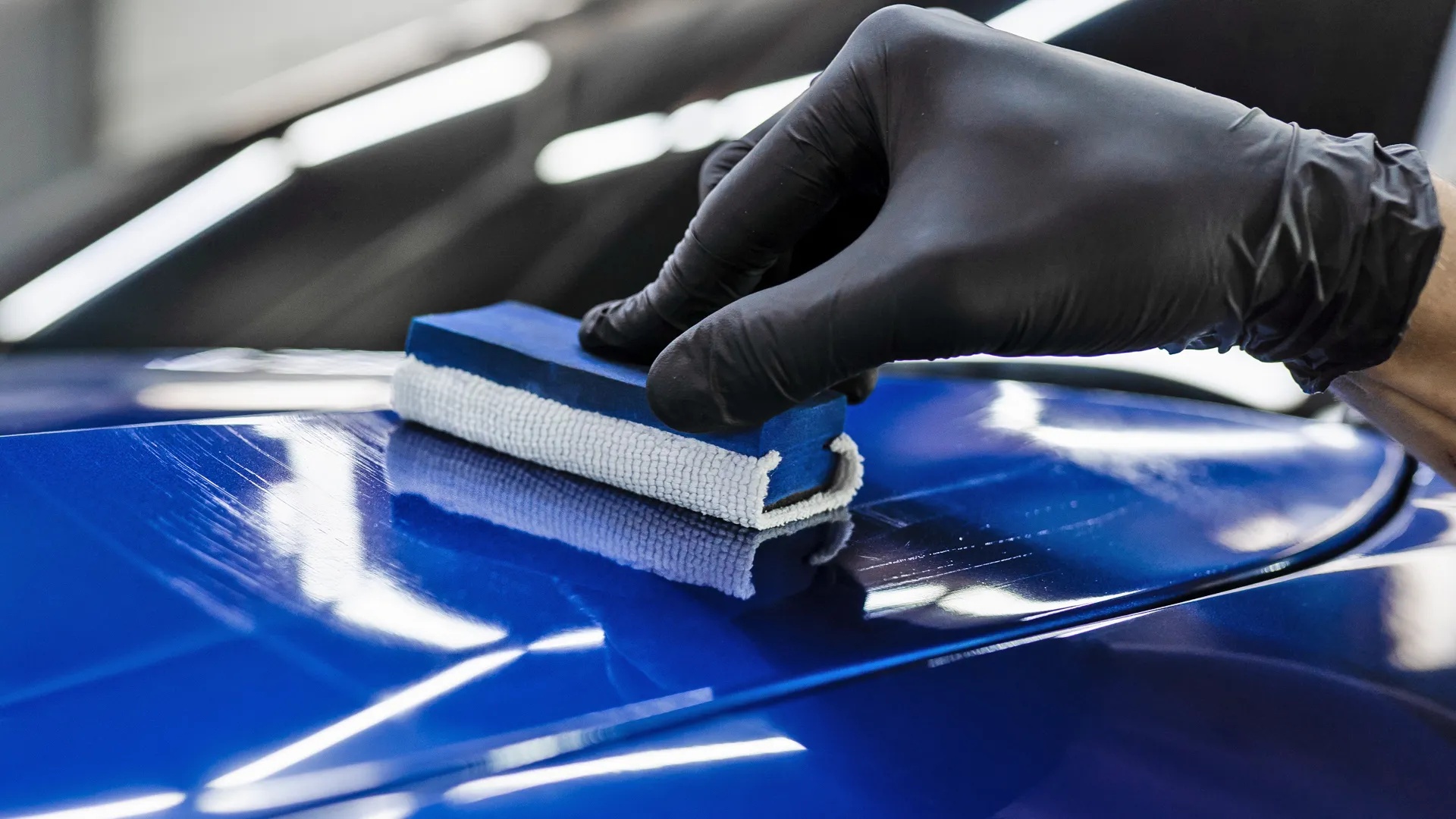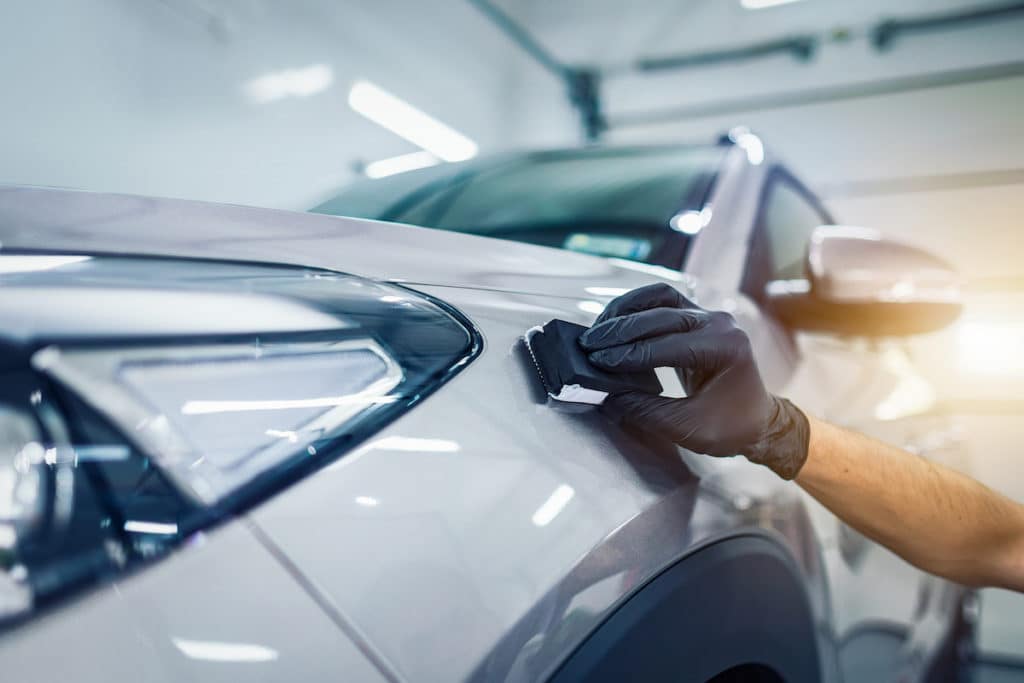Transform Your Lorry's Appearance with Ceramic Coating Philadelphia Professionals
Transform Your Lorry's Appearance with Ceramic Coating Philadelphia Professionals
Blog Article
Why Ceramic Finishing Is the Ultimate Solution for a Remarkable Complete
Ceramic covering has actually emerged as a leading remedy for those seeking a remarkable finish for their vehicles, thanks to its exceptional resilience and protective features. This sophisticated liquid polymer not just bonds effortlessly with manufacturing facility paint however additionally supplies a formidable barrier versus common hazards such as scratches, UV rays, and ecological contaminants. In addition, its hydrophobic buildings simplify upkeep while improving visual appeal. Nonetheless, understanding exactly how this innovation compares to traditional approaches and exploring its application subtleties can disclose much more about its value. What aspects really set ceramic finishing apart?
What Is Ceramic Covering?

When used appropriately, ceramic finish produces a hydrophobic surface that fends off water and dust, making it less complicated to maintain and clean. Unlike standard waxes or sealers, which typically provide short-lived protection, ceramic finishings can last for several years, depending on the item top quality and application technique. The procedure of using ceramic layer requires precise prep work, consisting of comprehensive cleansing and occasionally repaint modification, to make certain optimum bonding and performance.
Ceramic finishes are not restricted to automotive surface areas; they can additionally be made use of on different products, consisting of glass, steel, and plastics, giving a versatile solution for boosting defense. In general, ceramic finishing stands for a significant development in surface area security technology, integrating both useful and visual advantages for a vast array of applications.
Benefits of Ceramic Layer
While lots of surface security options exist, the benefits of ceramic finish stick out due to its special residential properties and durable efficiency. One of the main benefits is its exceptional toughness. Ceramic Coating Philadelphia. Unlike conventional wax or sealants that require frequent reapplication, ceramic finishes provide a resilient layer that can last for numerous years, substantially decreasing maintenance initiatives
Another significant advantage is improved security against environmental contaminants. Ceramic finishes create a hydrophobic surface area that repels water, dust, and different toxins, making it simpler to cleanse. This attribute not only maintains the car's look however also decreases the threat of rust and oxidation, particularly in harsh weather.
In addition, ceramic coverings provide exceptional resistance to UV rays, preventing fading and degradation of paint in time. This UV security is essential for preserving the visual value of surfaces and cars subjected to route sunlight.
Furthermore, the shiny coating accomplished with ceramic finish improves the general aesthetic appeal, giving surface areas a showroom-quality shine. Generally, ceramic layers stand for a considerable advancement in surface protection modern technology, giving long-lasting benefits that accommodate both practical and aesthetic needs.
How It Functions
Understanding the scientific research behind ceramic coatings discloses exactly how they provide such impressive protection and long life. At its core, a ceramic layer is a liquid polymer that chemically bonds with the vehicle's manufacturing facility paint.
The application process entails numerous steps, including surface area preparation, which is vital to attaining optimum adhesion. Once applied, the coating undergoes a treating process, throughout which it solidifies and creates a semi-permanent bond with the paint surface. This bond is what identifies ceramic layers from typical waxes and sealers, providing a longer-lasting protective obstacle that can endure for many years.
Additionally, the thickness of the finish can enhance its protective high qualities, making sure that it can withstand severe conditions. Eventually, the science of ceramic layers integrates sophisticated products with innovative application strategies to provide an unmatched degree of defense and visual improvement for vehicles.
Comparison With Typical Approaches
The advantages of ceramic coatings become especially evident when contrasted to standard paint security methods such as sealers you could try this out and waxes. While waxes supply a short-lived sparkle, typically lasting a couple of weeks to a number of months, ceramic coverings supply a long-lasting protective layer that can endure for numerous years. This resilience substantially decreases the frequency of reapplication, making ceramic finishes a more affordable service gradually.
Furthermore, standard approaches frequently call for comprehensive preparation and multiple applications to attain a sufficient degree of protection. In comparison, ceramic coatings bond at a molecular level with the automobile's surface, creating a robust guard versus environmental pollutants like UV rays, acid rainfall, and roadway salts. This bond enhances the vehicle's resistance to scratches and swirl marks, which are widespread with conventional waxes and sealers.
Moreover, the hydrophobic homes of ceramic coatings push back water and dirt, bring about less complicated cleansing and maintenance. In comparison, wax and sealant-treated surfaces can draw in grime, requiring even more frequent washing - Ceramic Coating Philadelphia. On the whole, ceramic coverings not only supply remarkable security however additionally deliver a more aesthetically attractive and long-lasting coating, establishing them as the favored selection for critical automobile owners
Application and Upkeep Tips

Using a foam applicator, apply the coating in little sections, complying with the supplier's standards regarding density and overlap. Allow adequate healing time in between layers, commonly 24-hour, to make sure appropriate bonding. After application, it is essential to stay clear of exposure to water or severe elements for a minimum of a week to allow the finishing to fully cure.
Additionally, using a ceramic upkeep spray can boost the finish's hydrophobic homes and longevity. Regular assessments for any type of indicators of wear will aid keep the layer's integrity and maintain that immaculate finish.
Verdict
In conclusion, ceramic coating arises as a premium option for achieving a remarkable vehicle surface. By creating a robust bond with manufacturing facility paint, ceramic finishing efficiently guards versus scratches, his explanation UV rays, and environmental impurities.

Report this page